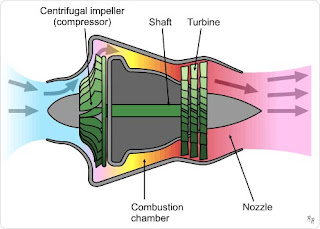If you have an Air Compressor or are contemplating getting one, you will want to pay special attention to this article. While there are a few techniques to safety where an air compressor is concerned, there is one that is critical. You should perform all the safety points I'll expose in this article.
But if you don't do any of them, the one I talk about that is critical you had better perform on a regular basis. I'll expose to you why now. Read on....
Yes an air compressor is a valuable tool for the homeowner as well as the professional. It has many good uses and multitudes of tools that can be used with it. On the same hand it can be a very deadly tool if you don't pay attention to the safety rules.
This article will be written around my review of the Makita MAC700 model compressor, but the same techniques apply to all air compressors as well. Whether they be electric powered or gas the same applies. When you think about it, the air compressor compresses air at a high PSI or pounds per square inch.
For example where the Makita MAC700 is concerned it can compress air into its canister or tank at a maximum of 130 PSI. What this amounts to is a very powerful explosive. If you don't perform the necessary safety techniques on your air compressor over a period of years you will have a dangerous problem on your hands.
More dangerous to your health and your loved ones as time goes by. Do not neglect these! If you or someone is standing by one of these air compressors and it were to blowup it could very easily kill you or at the very least inflict great bodily injury. Now, with these warnings laid down, lets see how to protect against this from ever happening.
These safety techniques are really self explanatory. I won't expound to much on each one, however the one I mentioned about being critical I will talk more about it.
Unsafe Operations and Safe Procedures Techniques
Of All, This One You Pay Attention To
Now to the most critical safety technique of all of them in my opinion. As mentioned earlier you should become familiar with your air compressor's operations. Know all of its parts and critical points about it.
It is no secret that air carries moisture. We refer to it as humidity. There is always a level of condensation in the air. Never will you listen to your weather channel and hear that the humidity is at zero. Some days it may be lower than others. Some higher. Point is, its always there.
This humidity or moisture gets into your air compressor as it runs or does it's "cut-out pressure" cycle. Cut out pressure is what is known as "when the tank is building pressure." As this takes place the air is forced into the tank until the maximum pressure is reached. Then the motor automatically shuts off by a safety switch.
Because of the humidity in the air, its a safe bet that the condensation gets into the air tank. Over time the water or moisture in the tank can cause the inside of the tank to begin to rust. This rust will in turn thin out or weaken the sides of the tank over time.
When this happens each time you force air back into the compressor you weaken the metal of the tank. Neglect this for a long time and you have an explosive danger on your hands. Fortunately, the manufacturer builds into the tank a release valve just for this purpose.
It is critical that you periodically open this valve to allow the water or moisture to drain out of the tank. When I say periodically I mean you should release the moisture at least once a month. Or after every use would be better.
The Conclusion
Along with releasing the condensation in the tank, you will want to keep an eye on the safety shutoff switch to the motor. Also if your compressor uses oil after every 300 hours of operation be sure to change it. Or once a year would be sufficient.
When operating power equipment, safety first should always be our priority number one. These safety techniques or safety topics I provide so that you will experience many years of safe and reliable service from your air compressor. God-forbid that anything I've described in this article about air compressors should ever happen to you or your family or anybody for that matter.
Therein lies the benefit of this article to you. It's safety first here at this website in all the products I review. If you own or are looking to purchase one of these valuable tools, I'd suggest you print this article off and hang it in your garage or wherever you have your compressor and refer to it always. It will help remind you!
Thanks for coming by...
But if you don't do any of them, the one I talk about that is critical you had better perform on a regular basis. I'll expose to you why now. Read on....
Yes an air compressor is a valuable tool for the homeowner as well as the professional. It has many good uses and multitudes of tools that can be used with it. On the same hand it can be a very deadly tool if you don't pay attention to the safety rules.
This article will be written around my review of the Makita MAC700 model compressor, but the same techniques apply to all air compressors as well. Whether they be electric powered or gas the same applies. When you think about it, the air compressor compresses air at a high PSI or pounds per square inch.
For example where the Makita MAC700 is concerned it can compress air into its canister or tank at a maximum of 130 PSI. What this amounts to is a very powerful explosive. If you don't perform the necessary safety techniques on your air compressor over a period of years you will have a dangerous problem on your hands.
More dangerous to your health and your loved ones as time goes by. Do not neglect these! If you or someone is standing by one of these air compressors and it were to blowup it could very easily kill you or at the very least inflict great bodily injury. Now, with these warnings laid down, lets see how to protect against this from ever happening.
These safety techniques are really self explanatory. I won't expound to much on each one, however the one I mentioned about being critical I will talk more about it.
Unsafe Operations and Safe Procedures Techniques
- Make sure your very familiar with the operation of your air compressor by reading the manual that comes with it.
- Make sure that all electrical wiring is not frayed or damaged. If so, have an electrician do the repairs to the wiring.
- Never operate the air compressor outside when it is raining or in a wet environment.
- Never inhale the air from a compressor. The air may contain carbon monoxide or other harmful vapors and particles from the tank.
- Do not point the nozzle and spray air at other people or animals or yourself. If there are particles in the tank or lines it could cause bodily injury.
- Never exceed the pressure rating of inflatables such as tires, basketballs, footballs, etc.
- Do not operate the air compressor under the influence of alcohol or drugs.
- Always operate the compressor in a well ventilated area.
- Never operate the compressor with guards or covers which are damaged or removed.
- Never touch hot components during or immediately after operation of the compressor.
Of All, This One You Pay Attention To
Now to the most critical safety technique of all of them in my opinion. As mentioned earlier you should become familiar with your air compressor's operations. Know all of its parts and critical points about it.
It is no secret that air carries moisture. We refer to it as humidity. There is always a level of condensation in the air. Never will you listen to your weather channel and hear that the humidity is at zero. Some days it may be lower than others. Some higher. Point is, its always there.
This humidity or moisture gets into your air compressor as it runs or does it's "cut-out pressure" cycle. Cut out pressure is what is known as "when the tank is building pressure." As this takes place the air is forced into the tank until the maximum pressure is reached. Then the motor automatically shuts off by a safety switch.
Because of the humidity in the air, its a safe bet that the condensation gets into the air tank. Over time the water or moisture in the tank can cause the inside of the tank to begin to rust. This rust will in turn thin out or weaken the sides of the tank over time.
When this happens each time you force air back into the compressor you weaken the metal of the tank. Neglect this for a long time and you have an explosive danger on your hands. Fortunately, the manufacturer builds into the tank a release valve just for this purpose.
It is critical that you periodically open this valve to allow the water or moisture to drain out of the tank. When I say periodically I mean you should release the moisture at least once a month. Or after every use would be better.
The Conclusion
Along with releasing the condensation in the tank, you will want to keep an eye on the safety shutoff switch to the motor. Also if your compressor uses oil after every 300 hours of operation be sure to change it. Or once a year would be sufficient.
When operating power equipment, safety first should always be our priority number one. These safety techniques or safety topics I provide so that you will experience many years of safe and reliable service from your air compressor. God-forbid that anything I've described in this article about air compressors should ever happen to you or your family or anybody for that matter.
Therein lies the benefit of this article to you. It's safety first here at this website in all the products I review. If you own or are looking to purchase one of these valuable tools, I'd suggest you print this article off and hang it in your garage or wherever you have your compressor and refer to it always. It will help remind you!
Thanks for coming by...













































